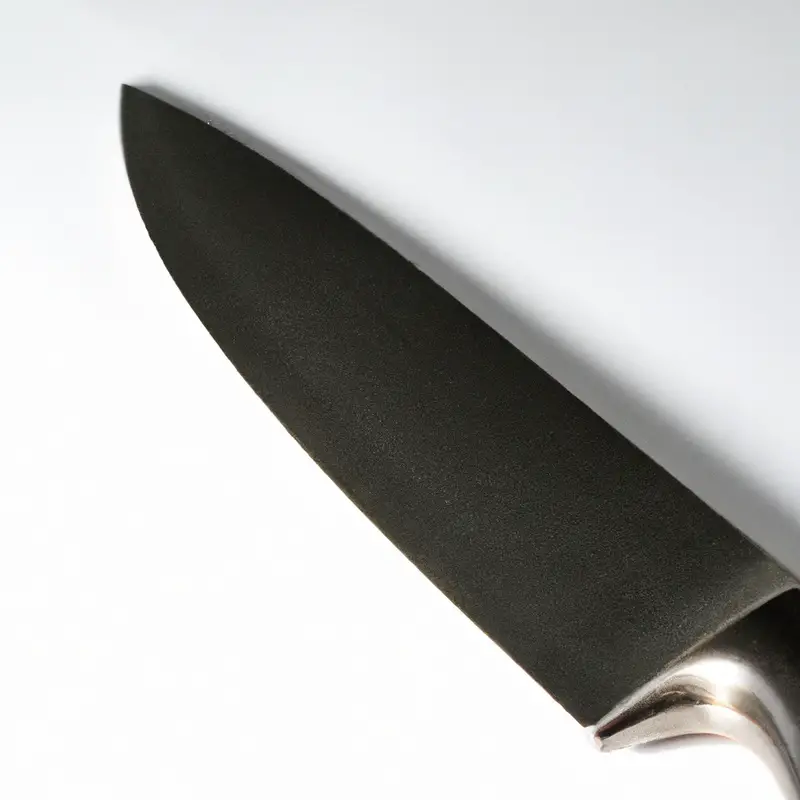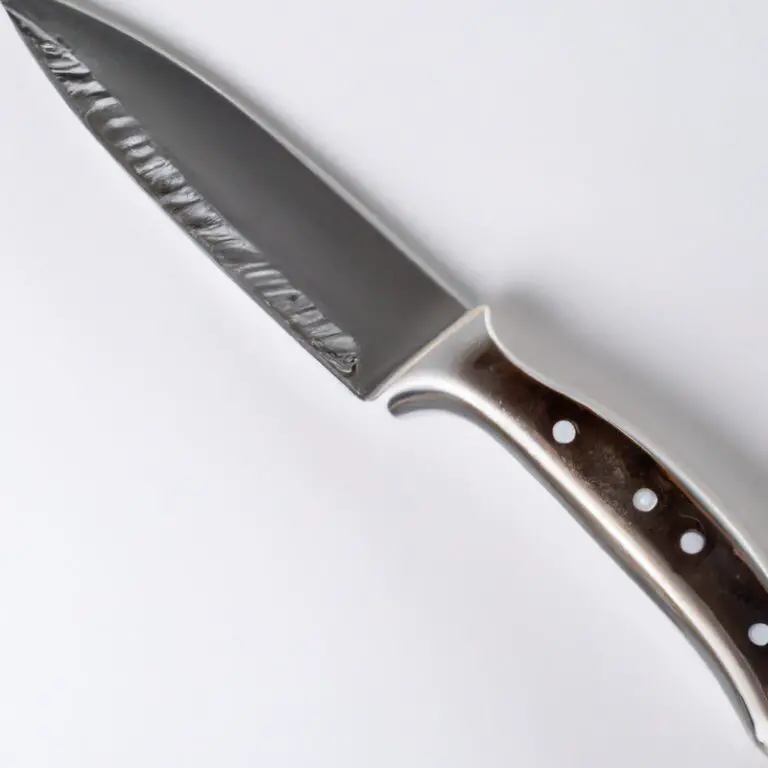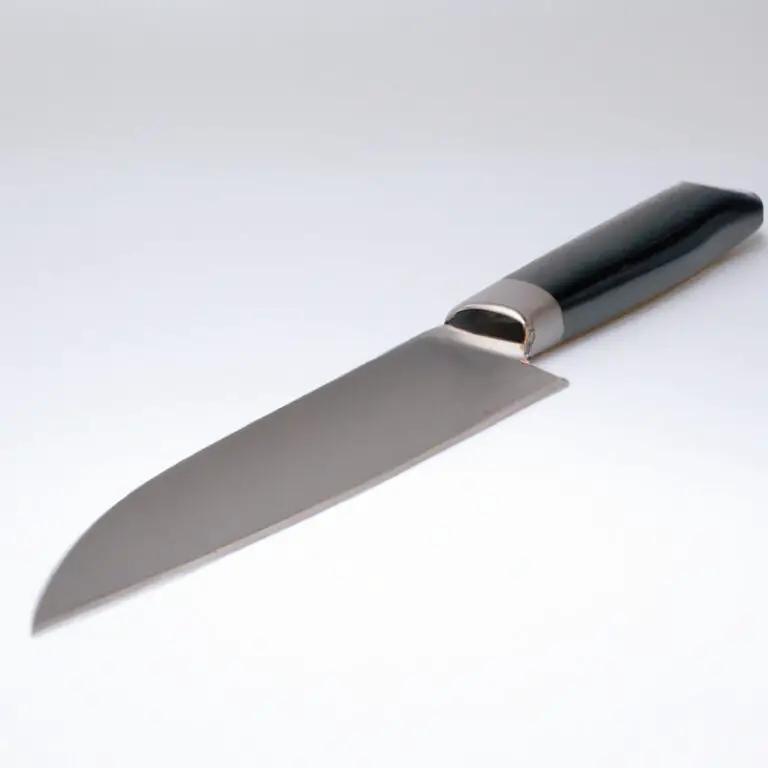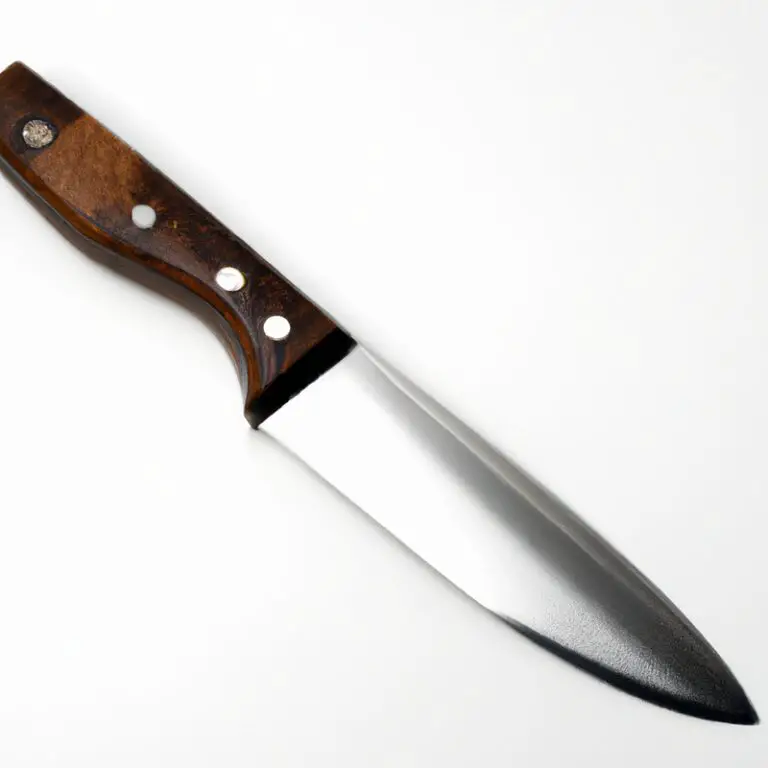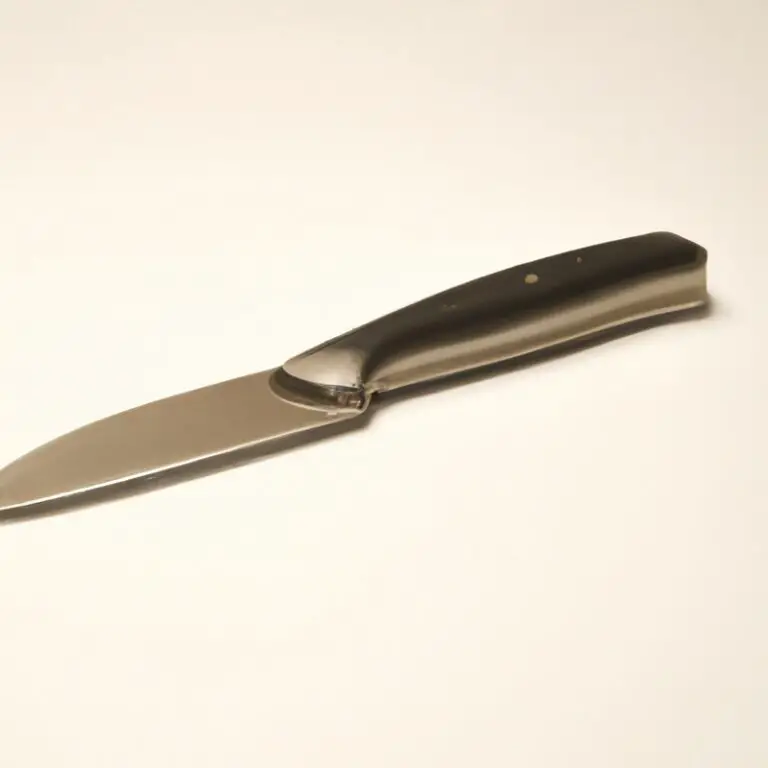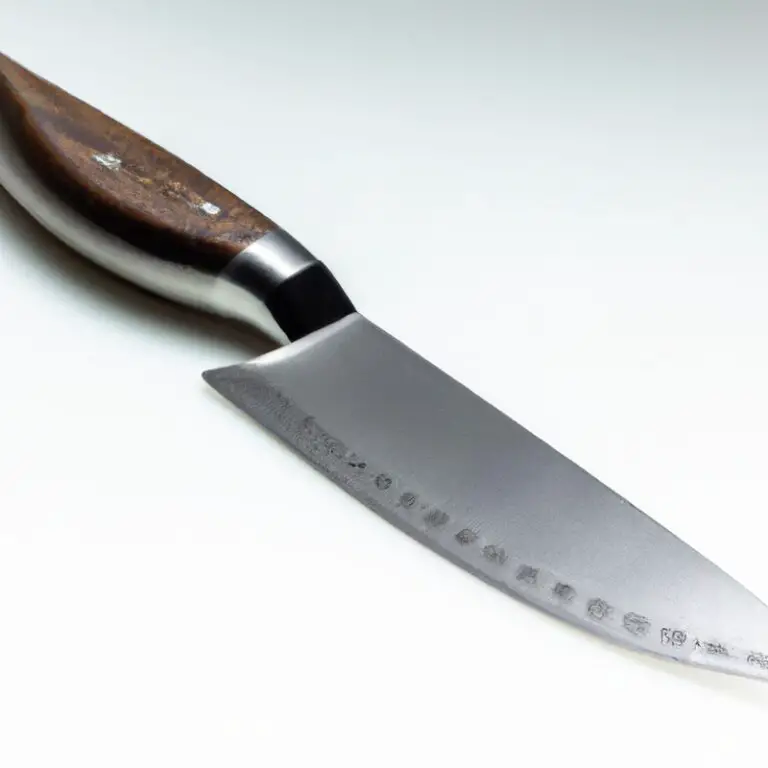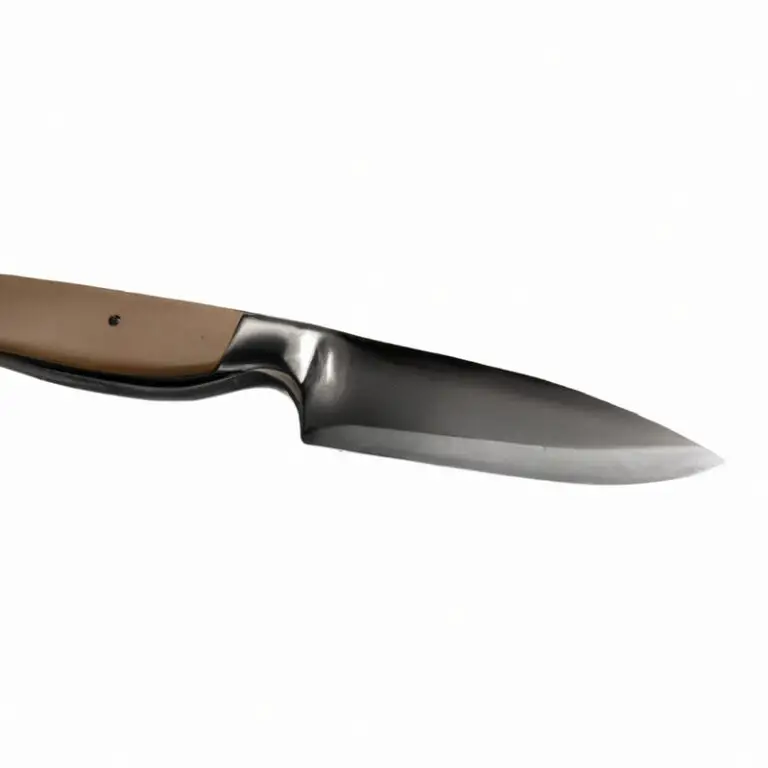Are There Any Safety Tips I Should Keep In Mind When Using a Paring Knife? Stay Safe!
Key Takeaways:
- Always use a sharp paring knife to reduce the likelihood of slipping.
- Hold the food securely in place with your non-dominant hand while slicing with your dominant hand.
- Cut away from your body to avoid self-injury.
- Store the paring knife in a designated and safe location to prevent accidental injury.
Have you ever had a little mishap while using a paring knife in the kitchen? Maybe a slip of the handle, an accidental nick on your finger, or worse?
As a professional chef, I’ve seen it all, but the truth is, many knife-related injuries can be avoided if you follow some basic safety tips.
In this article, I’ll be sharing some essential safety tips that you should keep in mind when using a paring knife, whether you’re a seasoned pro or a beginner cook. So, let’s get started, and learn how to keep yourself and others safe in the kitchen.
| Paring Knife Safety Tips |
| 1. Always use a sharp knife. A dull blade can slip and cause injury. |
| 2. Keep your fingers away from the blade by using a claw grip technique. |
| 3. Cut away from your body, not towards it. |
| 4. Use a cutting board to keep the knife stable and prevent accidents. |
| 5. Store your knife in a knife block or sheath when not in use. |
| 6. Keep your knife clean and dry to prevent rust. |
Grip the knife handle properly
To ensure safety while using a paring knife, it’s crucial to grip the knife handle properly. Hold the handle firmly with your fingers wrapped around it, but keep your thumb and index finger away from the blade.
This way, you will avoid any accidents that can happen due to slipping.
A proper grip will also enhance your control and precision while cutting. Remember to keep your wrist straight and use a comfortable grip to reduce the chances of fatigue.
By gripping the knife handle properly, you can minimize the risk of accidents while using a paring knife.
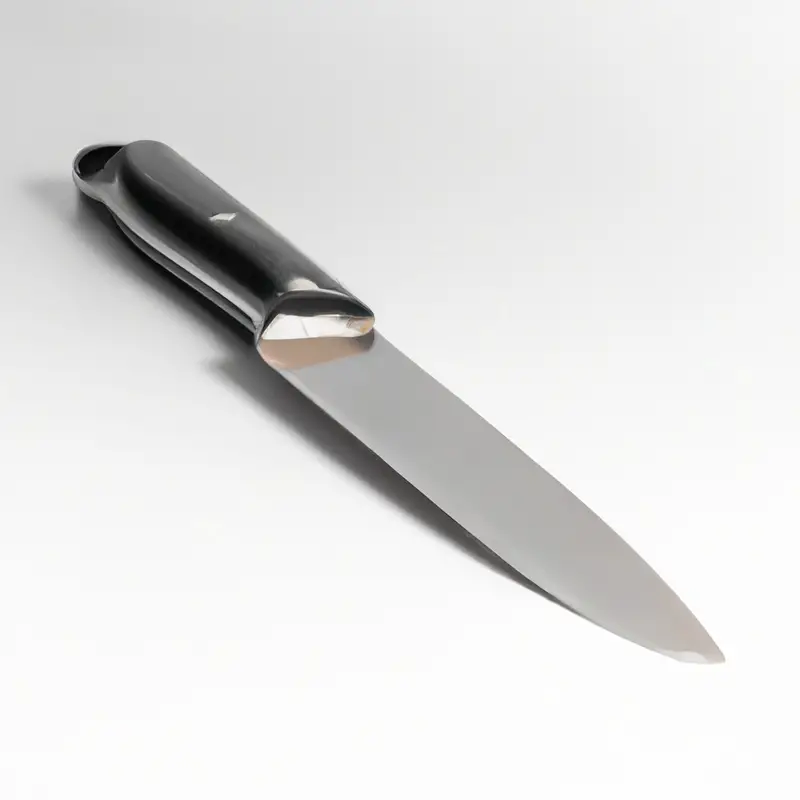
Keep fingers away from the blade
When using a paring knife, it is important to keep your fingers away from the blade at all times. This can prevent accidental cuts and injuries.
Make sure to grip the knife handle firmly and keep your fingers curled under your hand, away from the blade.
Never use your fingers to move food that is being cut. Instead, use a fork or a utensil to hold it in place.
Additionally, always cut away from your body to further reduce the risk of accidentally cutting yourself.
By following these simple tips, you can ensure a safe and enjoyable cutting experience.
Use a sharp knife
Using a sharp knife is crucial for your safety when using a paring knife. Dull knives require more pressure, making them more likely to slip and cause injury.
Sharpening your paring knife regularly will ensure your cuts are clean and reduce the chance of injury.
A sharpening stone or honing rod are two tools that can be used to keep your knife sharp. Always use caution when sharpening your knife and follow proper instructions to avoid injury.
Remember, a sharp knife is a safer knife.
Cut away from your body
Cutting towards your body can result in serious injury when using a paring knife. To avoid potential harm, always cut away from your body.
This technique also allows for better visibility and control over the knife and the food being cut.
Remember to keep your fingers away from the blade and to use a cutting board to avoid damaging countertops or surfaces. By practicing this technique consistently, you can ensure a safe and enjoyable experience while using a paring knife.
Avoid cutting hard objects
It’s important to avoid cutting hard objects like bones, frozen foods, or hard vegetables when using a paring knife. The narrow and thin blade of a paring knife is not designed to handle such tasks and may cause the blade to bend, warp or even break.
This can lead to serious injuries and compromise the integrity of the blade, reducing its lifespan.
To ensure your safety and avoid damaging the knife, use a different type of knife for cutting hard objects. Choose a chef’s knife or a serrated knife instead.
This way, you can get the job done efficiently and safely without risking your well-being or the longevity of your paring knife.
Store the knife safely
It is essential to store the knife safely to prevent any injuries. Here are some tips on how to store your paring knife safely:
- Use a knife block or sheath: A knife block or sheath can effectively store your knife while protecting it from damage. Avoid storing your knife loose in a drawer or countertop, where it can slide around and potentially cut someone.
- Store it upright: When storing your knife in a block, make sure to store it upright with the blade facing down. This prevents any accidental cuts and helps maintain the sharpness of the blade.
- Keep it dry: Make sure that your knife is completely dry before storing it to avoid any rusting or corrosion. Wipe it down with a clean, dry cloth before placing it in a block or sheath.
- Keep it out of reach of children: Store your knife in a location that is out of reach of children to avoid any potential harm or accidental injuries.
By following these tips, you can store your paring knife safely and keep it in good condition for extended use.
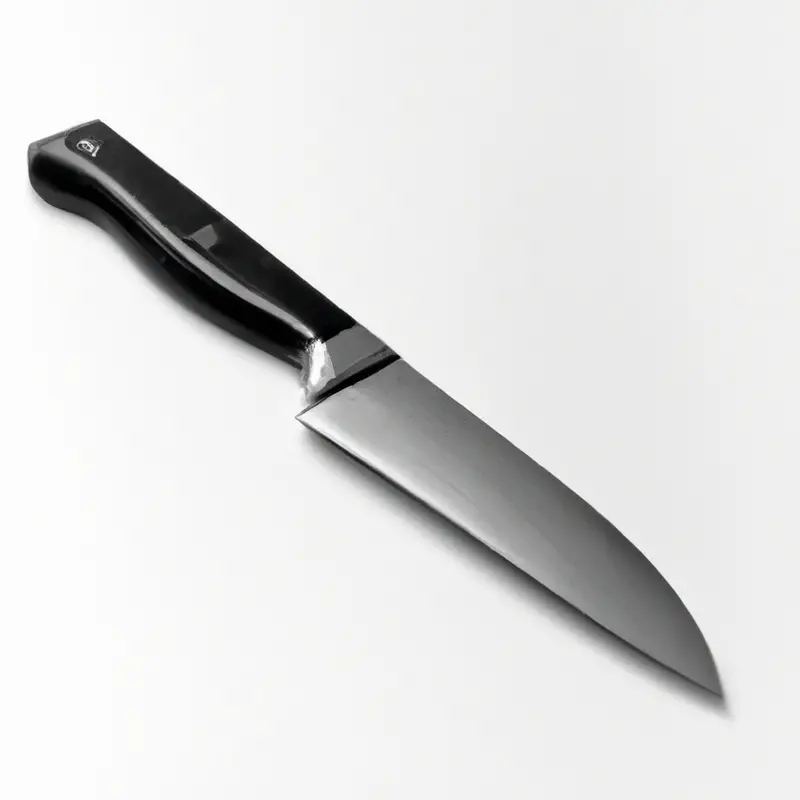
Keep the knife clean and dry
It is crucial to keep your paring knife clean and dry for hygiene and safety purposes. After each use, wash the knife with warm soapy water and promptly dry it to prevent rusting.
Use a soft cloth or towel to remove any moisture from the blade and handle.
You can also sanitize the knife by wiping it with alcohol or vinegar. Keep the knife in a dry place and avoid leaving it in water or damp surfaces that can cause damage.
A clean and dry knife not only ensures food safety but also preserves the lifespan of the blade.
Use a cutting board
Use a cutting board to protect both yourself and your countertops when using a paring knife. Cutting boards provide a stable and level surface for cutting, which can prevent slips and accidents.
Additionally, they prevent damage to your countertops and can help extend the life of your knives by preventing dulling or chipping.
When selecting a cutting board, look for one made of a relatively soft material that won’t dull your knife – material like bamboo, wood or plastic. Avoid glass or ceramic cutting boards as they can damage the blade of your knife.
Place the cutting board on a stable surface and make sure it doesn’t slide around when cutting.
Avoid distractions while cutting
Avoid Distractions While Cutting: When cutting with a paring knife, it is essential to stay focused and avoid distractions. This means putting away your phone, turning off the television, and paying attention to the task at hand.
Distractions can cause you to lose focus, resulting in accidental cuts and injuries.
Additionally, distractions can cause you to make mistakes, leading to uneven cuts or damage to the knife. To ensure your safety, it is best to find a quiet and distraction-free environment before using a paring knife.
Keep the knife out of reach of children
It is crucial to keep the knife out of reach of children when not in use. Children are curious and might accidentally hurt themselves while playing with the knife.
Therefore, after using the knife, store it in a safe place where children cannot reach it.
Additionally, make sure to never leave the knife unattended while using it, especially in the presence of children. It is better to be cautious to avoid any potential accidents.
Remember, the safety of children should always be a top priority.
Final Verdict
To sum it up, using a paring knife can be a safe and efficient way to prepare fruits and vegetables with a little bit of care and attention. By following these simple safety tips like keeping your fingers away from the blade, using a sharp knife, cutting away from your body, and storing it securely, you can significantly reduce your risk of injury in the kitchen.
Always remember to keep your knife clean, use a cutting board, avoid distractions, and keep it out of reach of children.
By incorporating these safety tips and practical takeaways into your daily routine, you can ensure a safe and enjoyable experience while using a paring knife. So, stay safe and happy cooking!

